Triceratops
Name Origin
Three-horned face
Family
Ceratopsidae
Classification
Diapsida, Ornithischia, Marginocephalia
Habitat (Discovery Location)
United States, Canada
Period
Approximately 70 to 66 million years ago (Late Cretaceous)
Length
Approximately 9 meters
Weight
Approximately 6 to 12 tons
Diet
Herbivore (Plant-eater)
 Jurassic
Jurassic
Park / World Featured Dinosaur
Appearance in Jurassic Park
In Jurassic Park, a single Triceratops appears, lying sick on its side. The scene where Dr. Alan Grant is shown being deeply moved by the sight is one that many viewers likely remember well.
The individual featured in the film was intended to be a relatively young animal, measuring about 5 meters in length.
The original script also planned for a baby Triceratops to appear next to this parent. Although an elaborate animatronic model was built for the scene, it was unfortunately cut and did not make it into the final film.Appearance in The Lost World: Jurassic Park
It was captured by InGen's dinosaur hunters and held in a cage at their camp.
However, once released, it unleashed its power, rampaging through the camp and destroying the hunters' base and equipment with powerful body slams.Appearance in Jurassic Park III
It is portrayed as having a magnificent physique, rivaling that of the film's main threat, the Spinosaurus.
However, its actual screen time is extremely limited, restricted to only a brief glimpse in the background scenery as the group flies over Isla Sorna near the beginning of the film.Appearance in Jurassic World
In this film, Triceratops are seen both as babies (juveniles) in the "Gentle Giants Petting Zoo" attraction and as several adults housed in the operating area of the "Gyrosphere."
Fortunately, the herd in the Gyrosphere valley was not directly attacked by the Indominus rex.
However, midway through the film, the Indominus rex breaches the "Aviary" dome, throwing the park into a panic as Pteranodons and other pterosaurs escape. During this chaos, one of the juveniles from the "Gentle Giants Petting Zoo" suffers the ordeal of being attacked by a Pteranodon and nearly carried off into the sky.Appearance in Jurassic World: Fallen Kingdom
At the time of the previous film, Jurassic World, it was the only ceratopsian featured within the park's exhibit area.
In this film, feral individuals are shown living and breeding independently on Isla Nublar.
The film features a pair of adults alongside a small juvenile. Although all park dinosaurs were originally created as females, the fact that they are moving in family units with offspring strongly suggests that, after years of life in the wild, some individuals changed sex to male and began breeding naturally.
Their main appearances in the film occur in the following two scenes:
The Escape on Isla Nublar
They are depicted desperately fleeing from the approaching pyroclastic flows as the island is destroyed by the volcanic eruption.
Confinement and Escape at the Lockwood Estate
During the dinosaur rescue operation, at least 3 to 4 individuals, including adults and the juvenile, were captured and transported to the basement of the "Lockwood Estate" on the U.S. mainland. Although they were held in cages, they were released along with the other dinosaurs at the end of the story, successfully escaping together as a family.Appearance in Jurassic World: Dominion
In the film, they are seen roaming on a ranch. Later, during the story's climax when the wildfire strikes the "Biosyn Sanctuary," they are confirmed fleeing from the burning forest toward the lake alongside other herbivorous dinosaurs.
Additionally, footage posted on the official promotional website "Dinotracker" captures a herd of Triceratops crossing a road in the UK, depicting how their habitat has expanded across the globe.

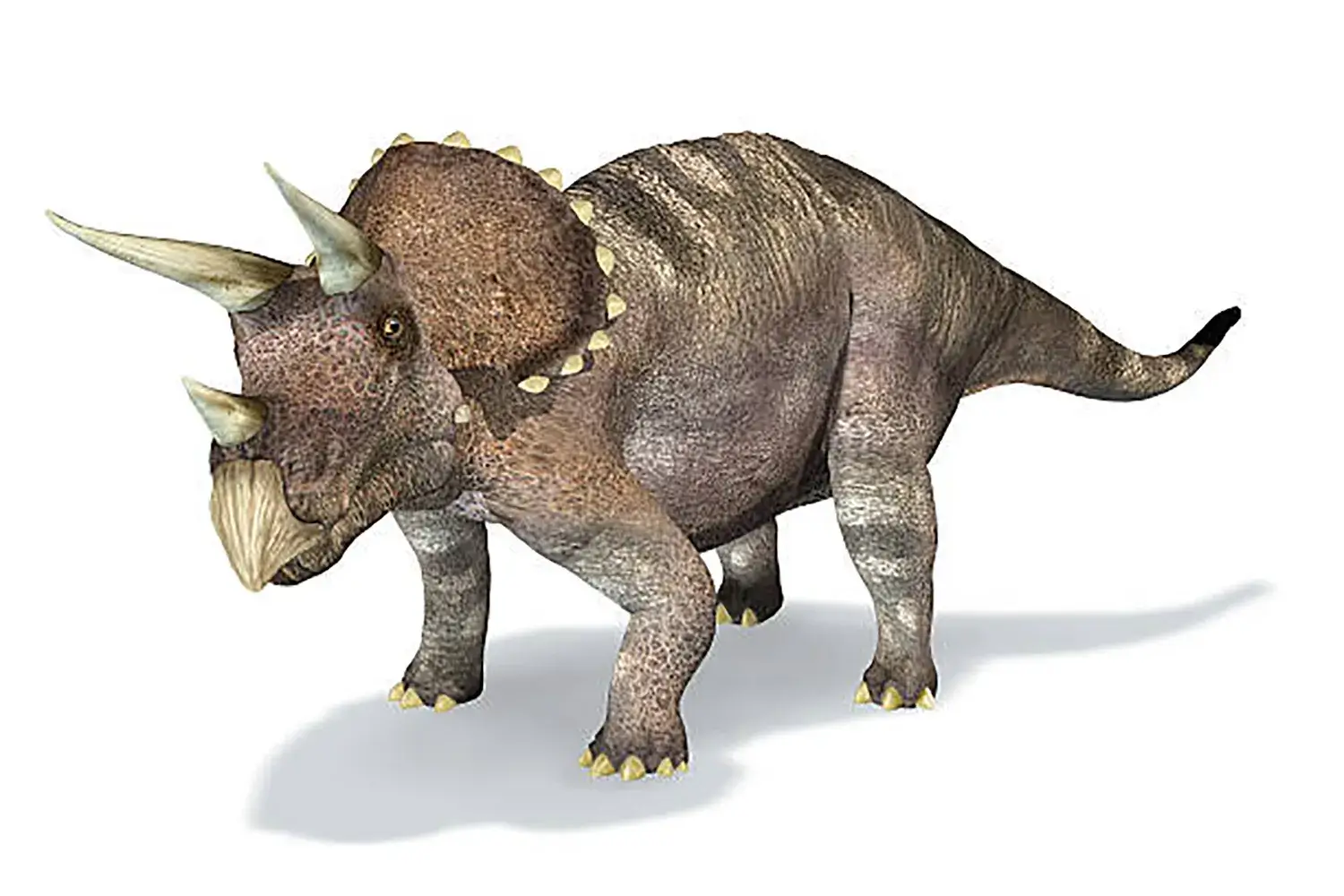
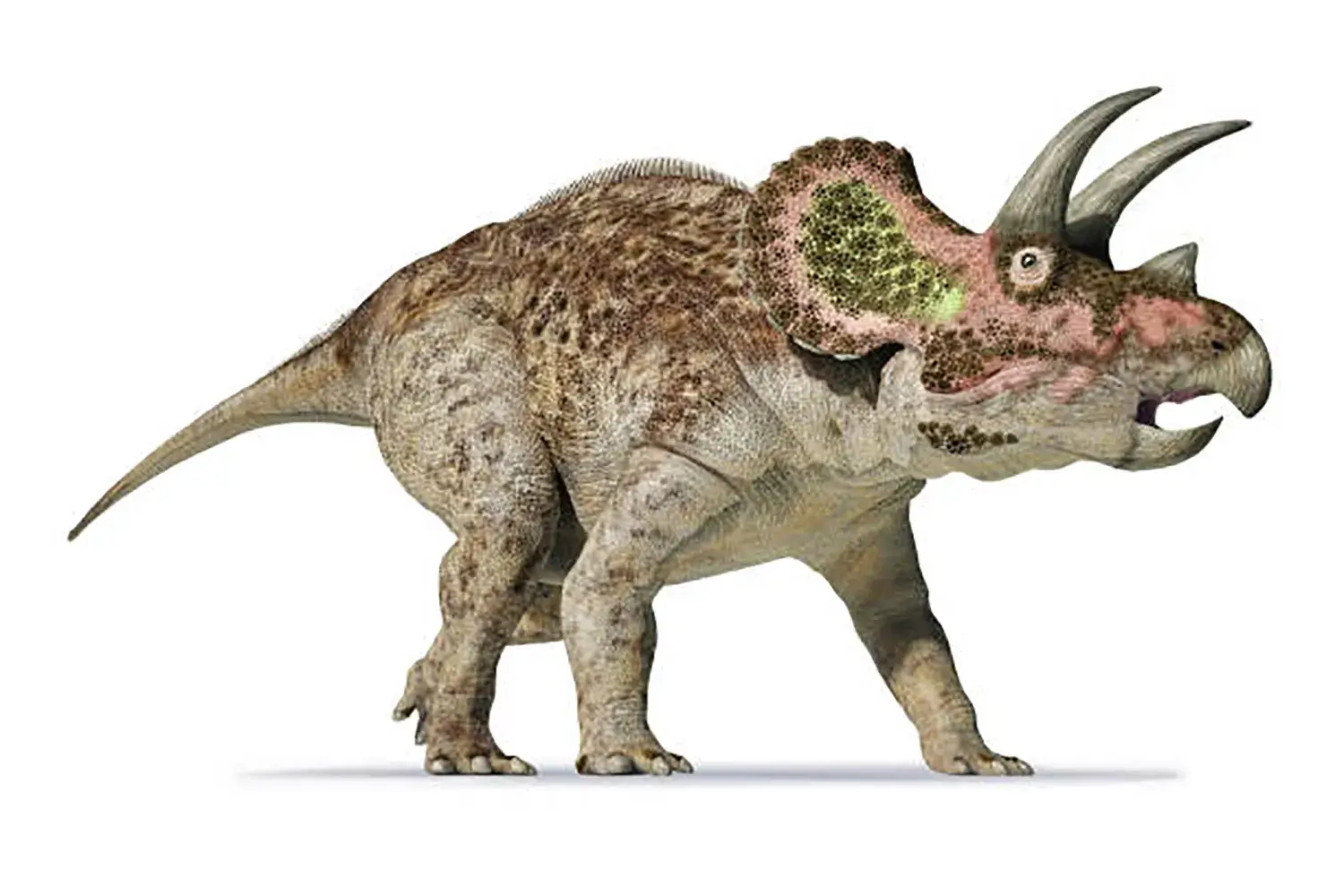
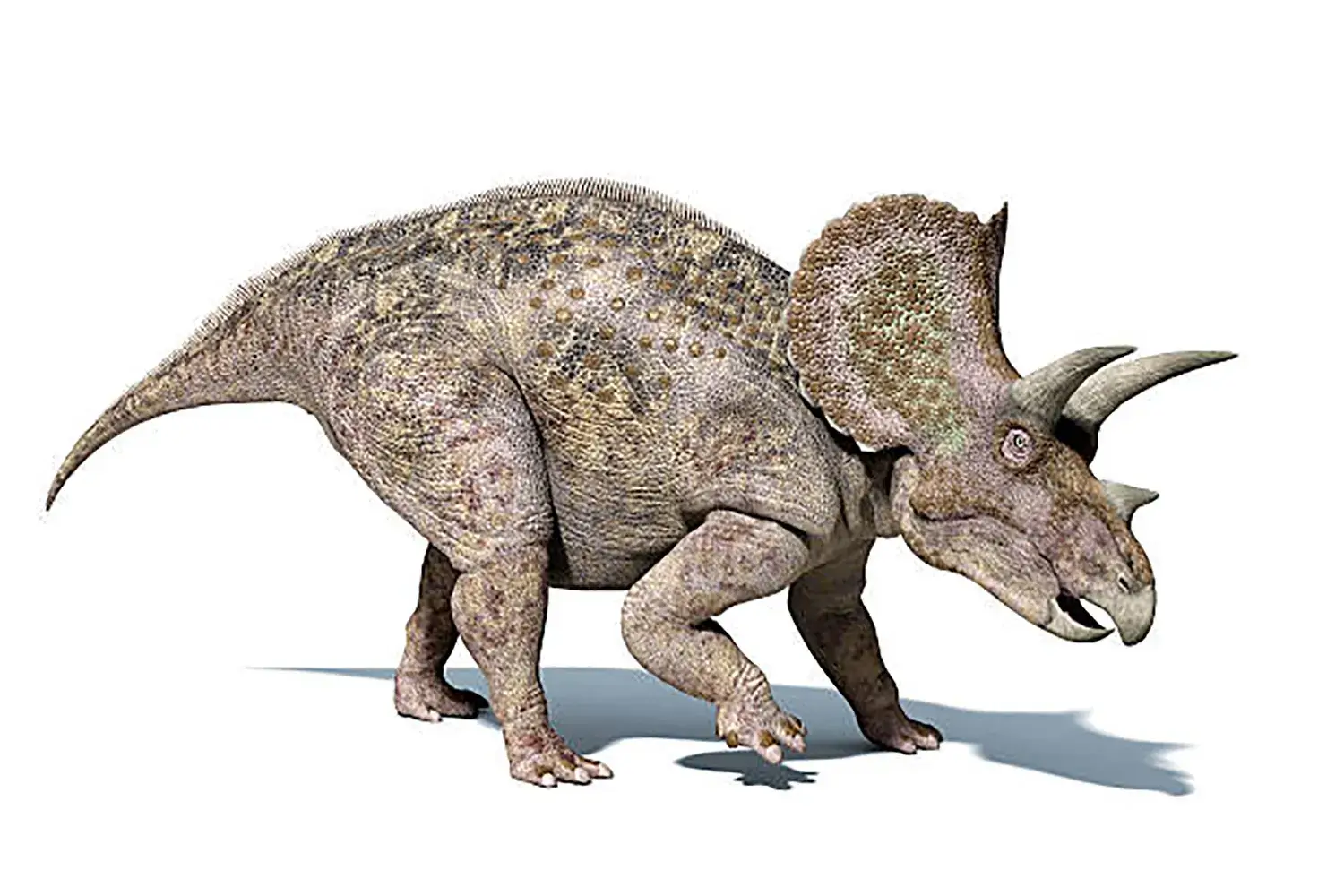
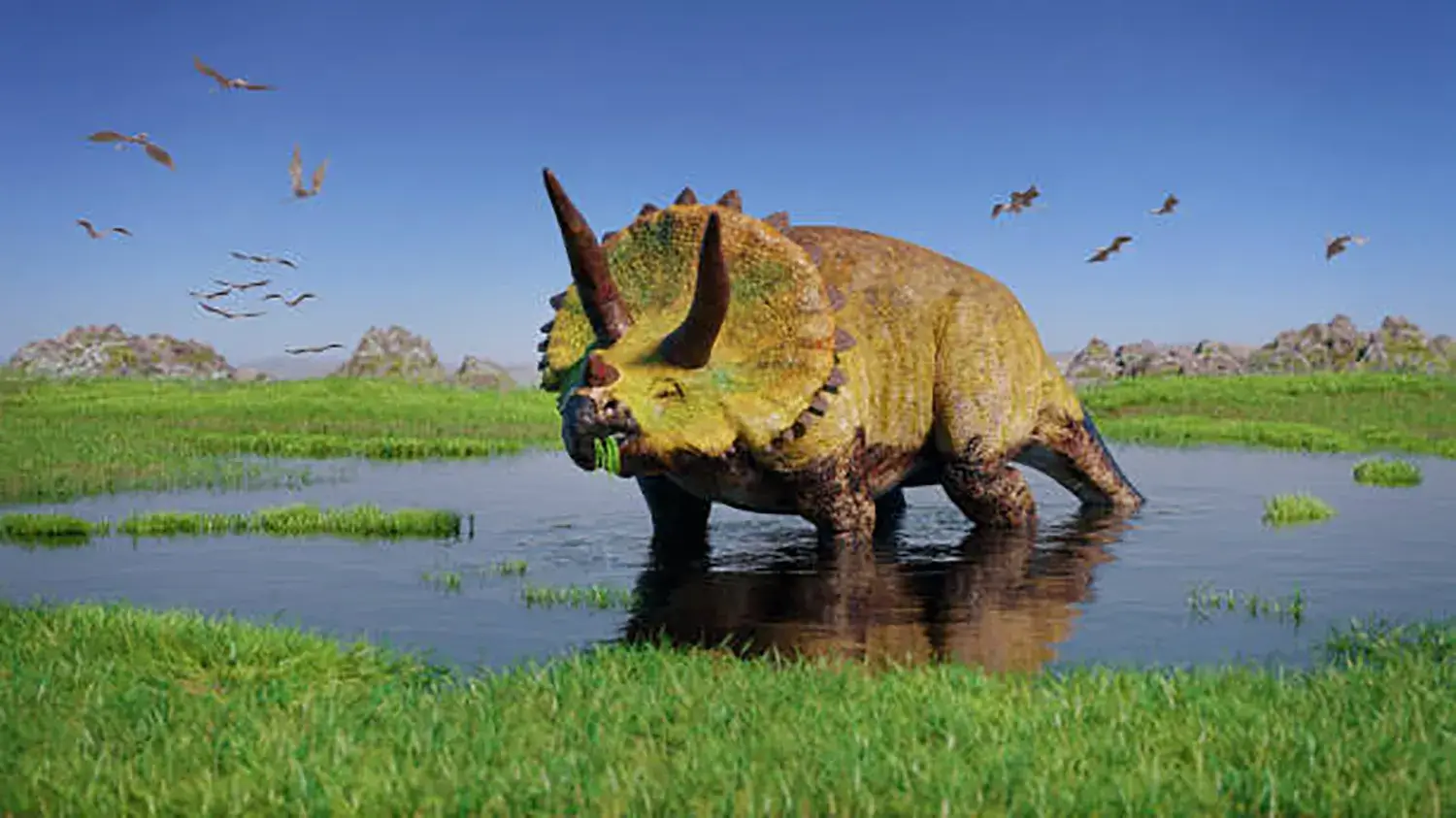
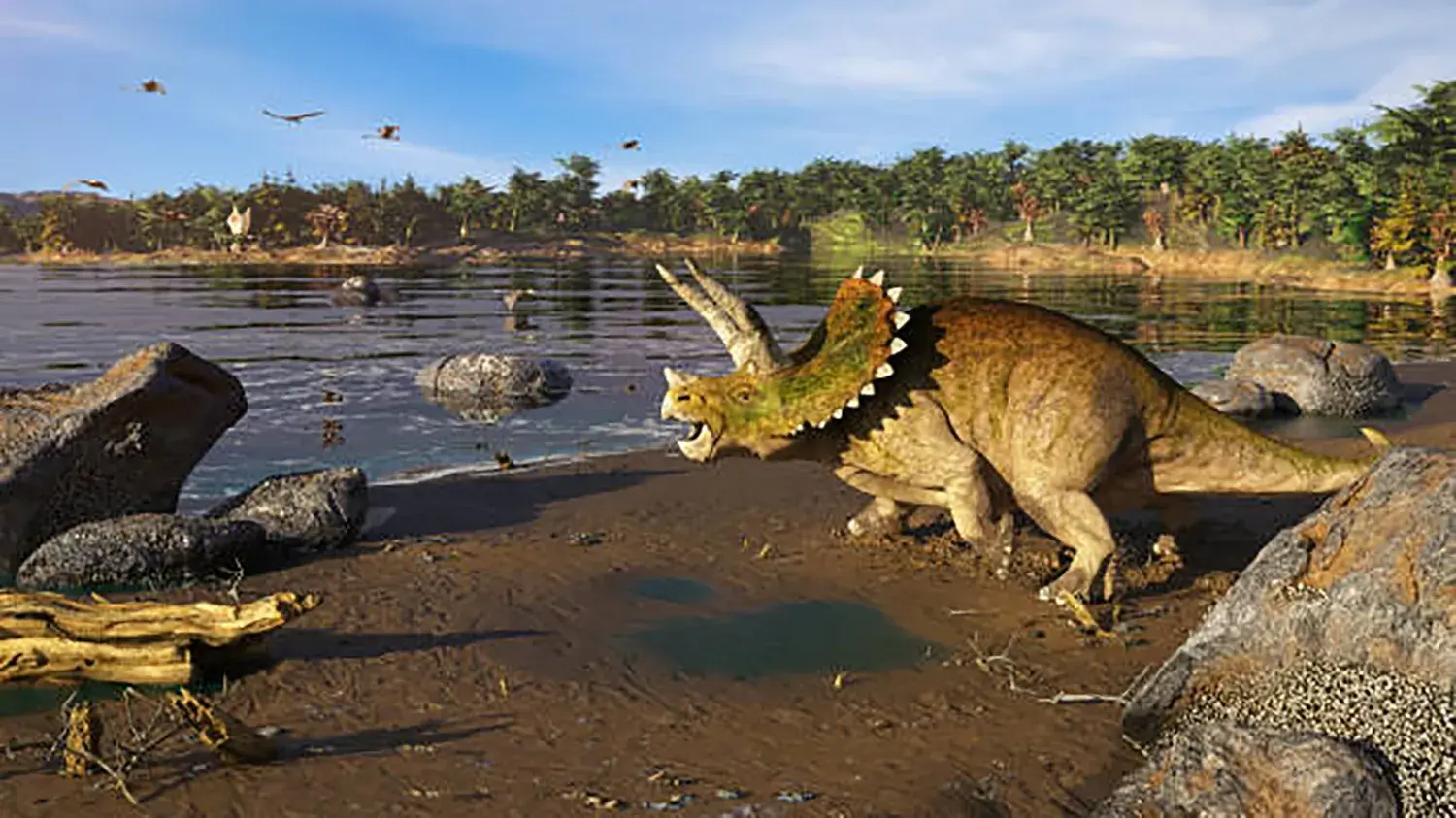
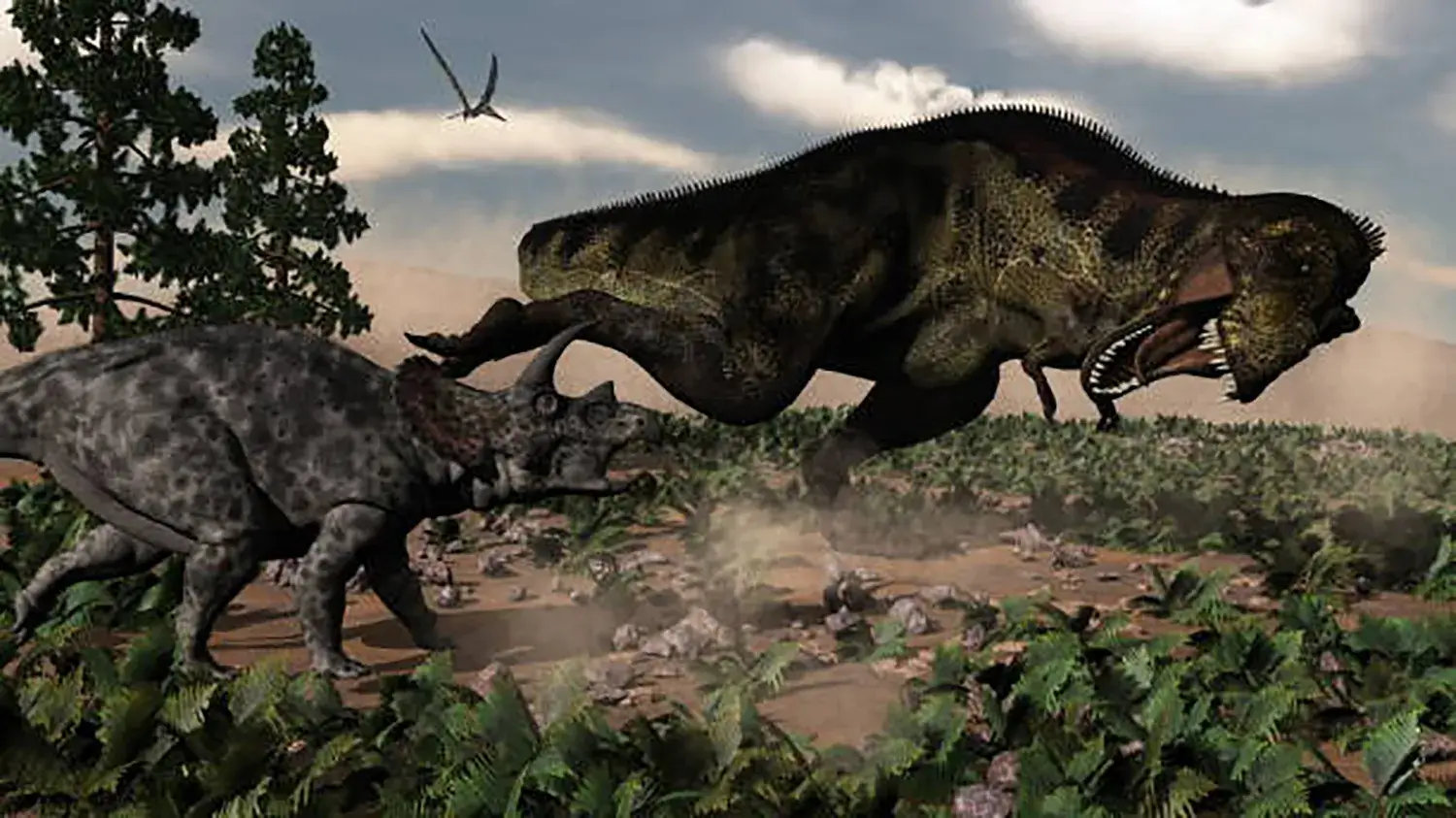

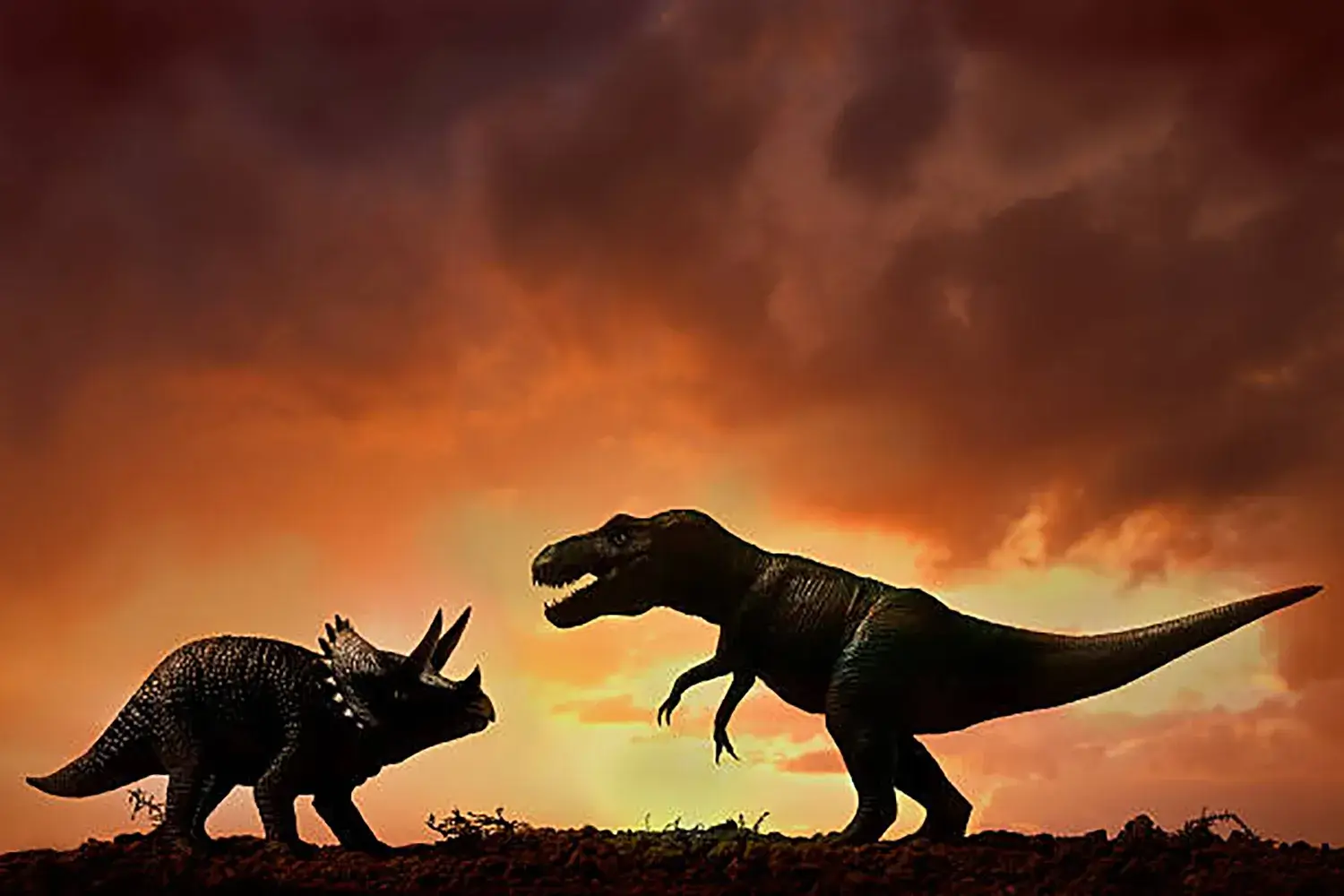

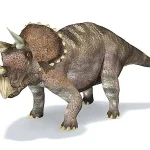

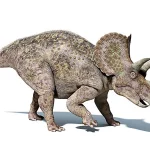
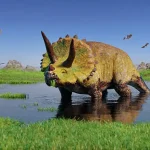
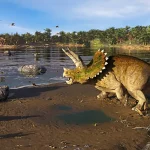
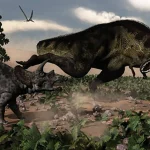

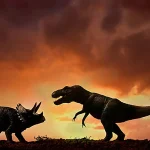
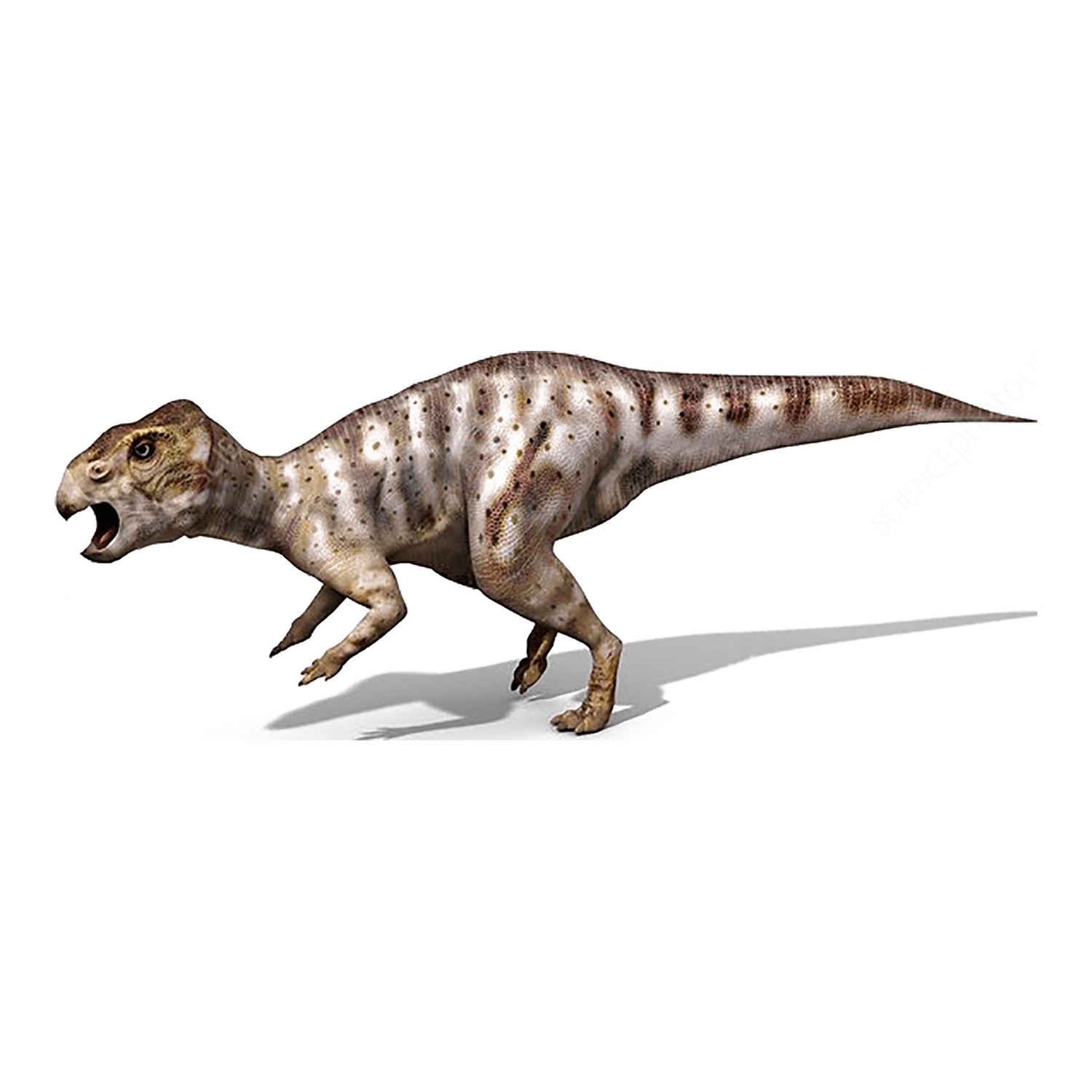
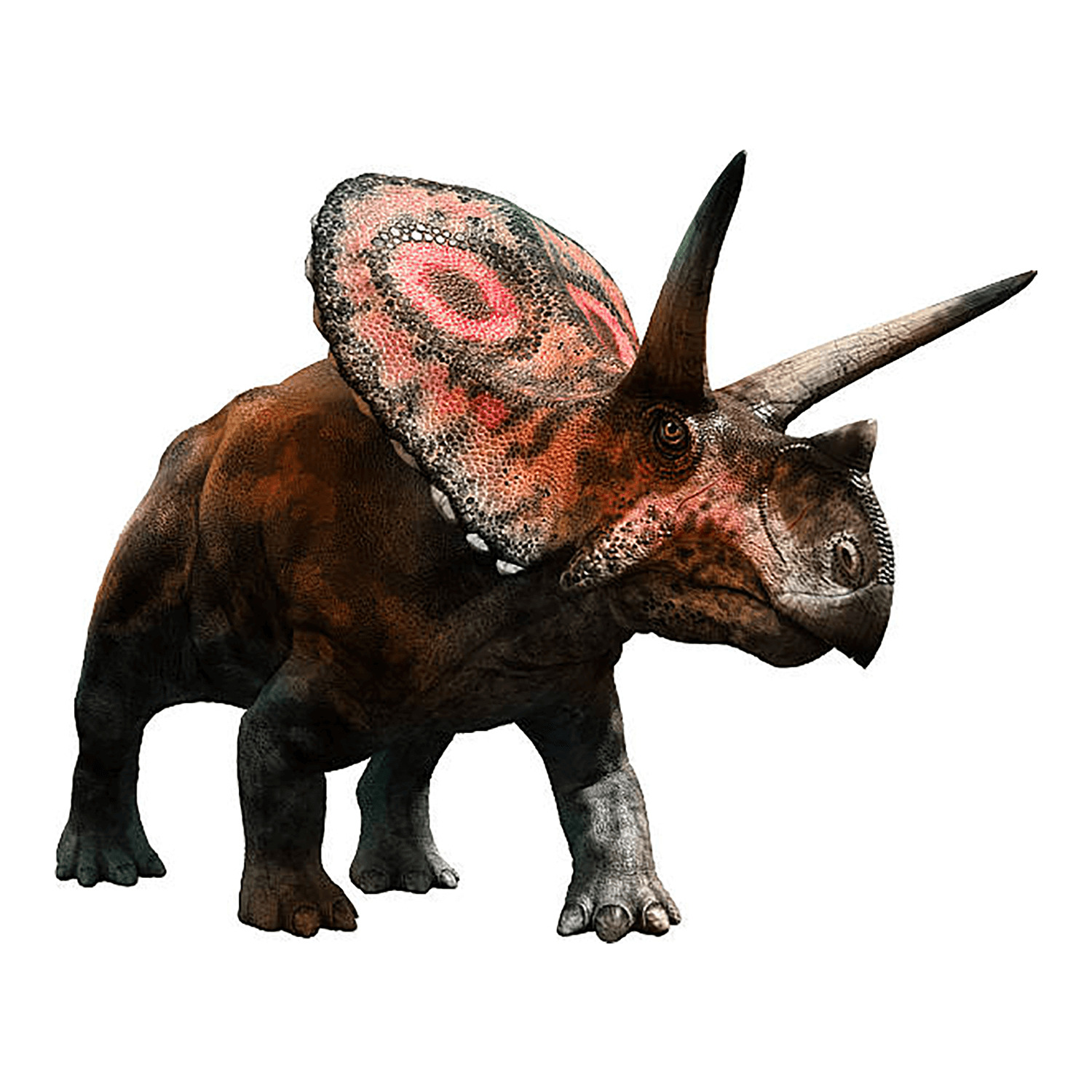
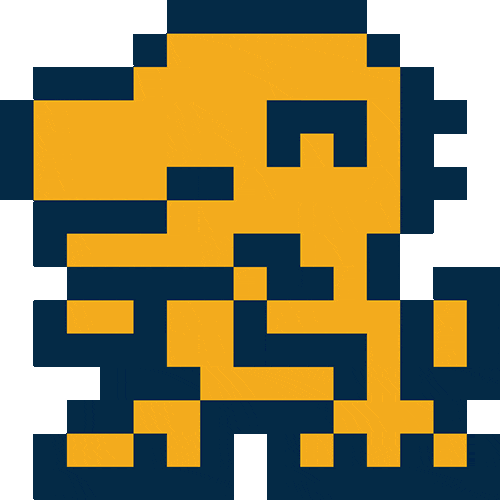
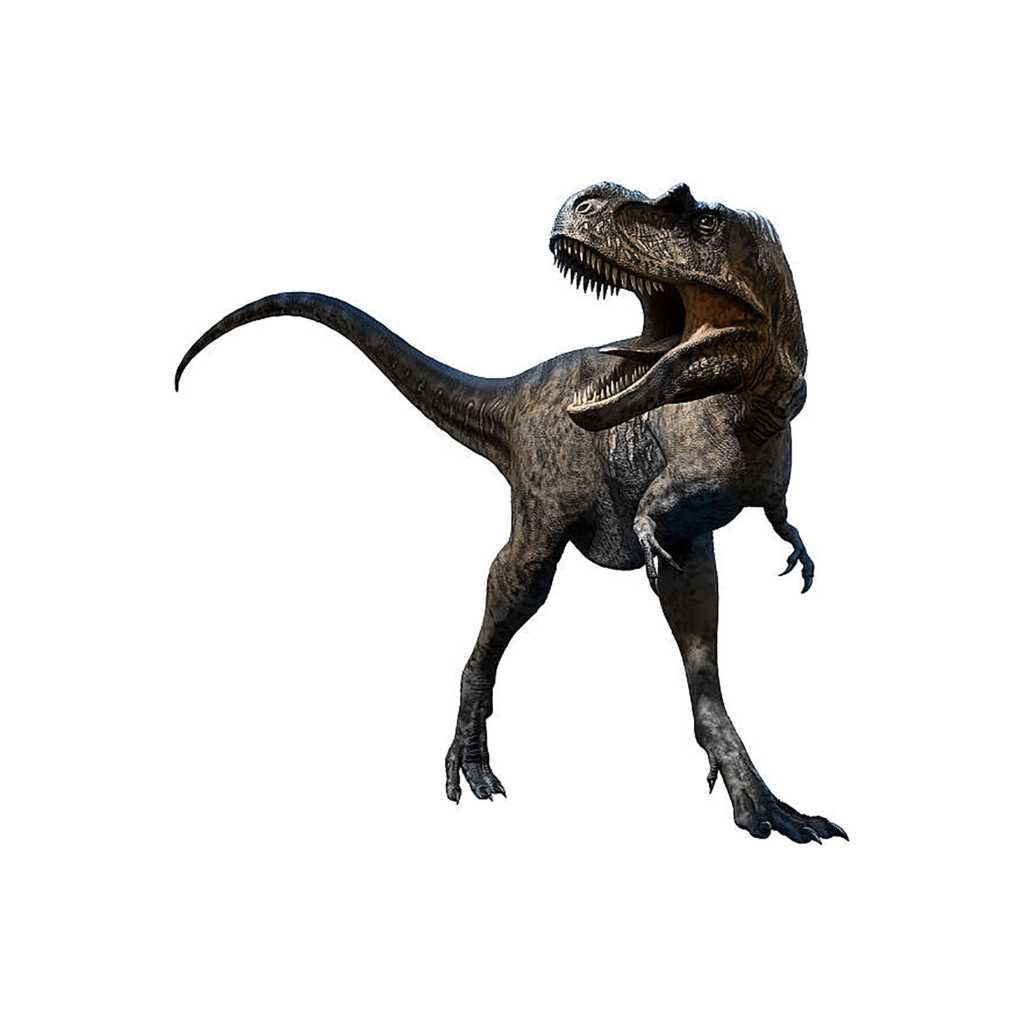
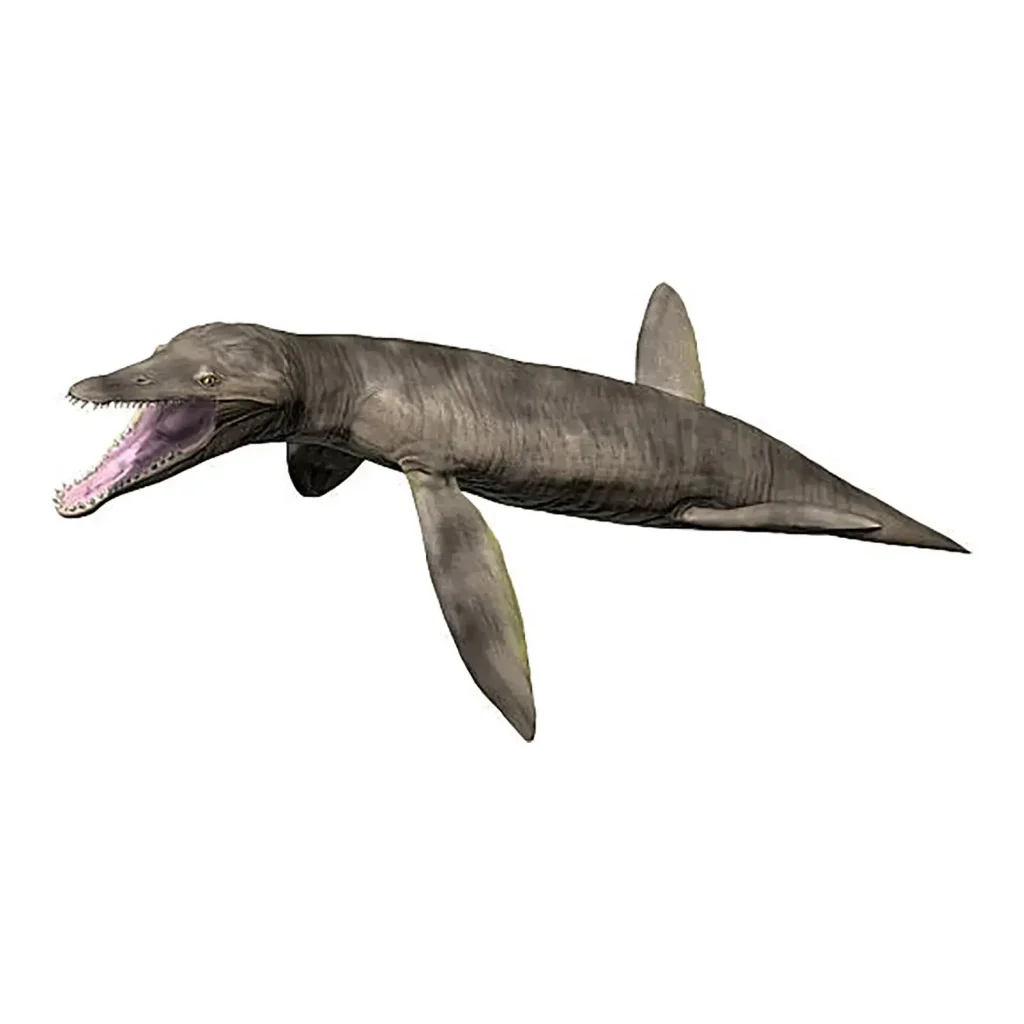
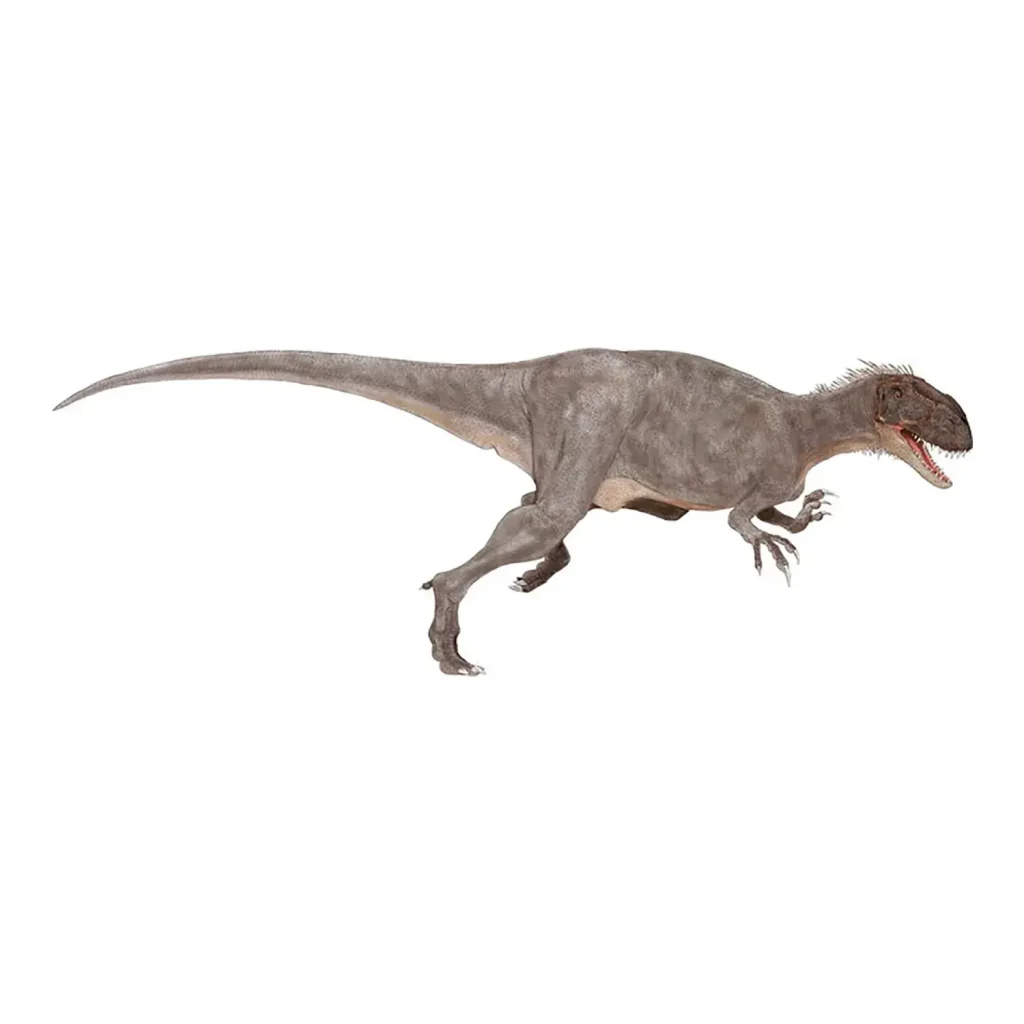
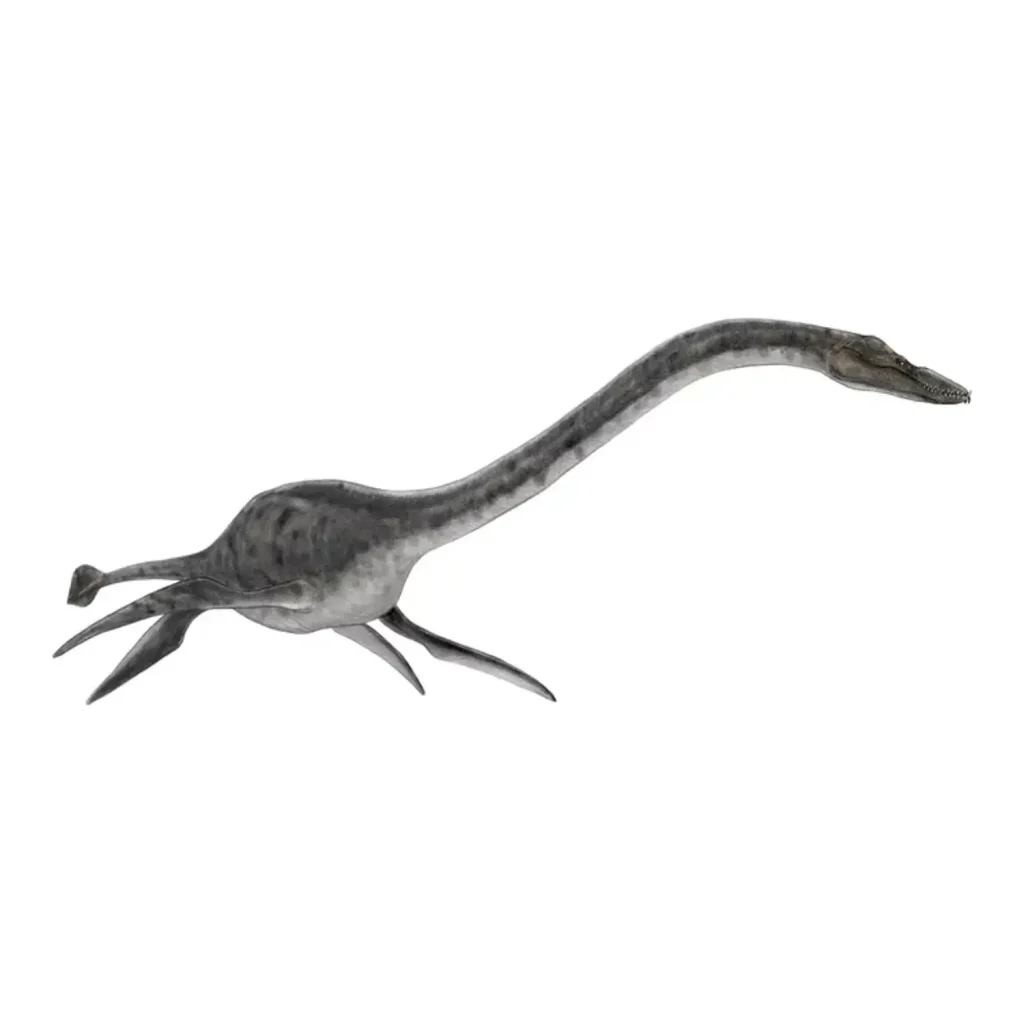
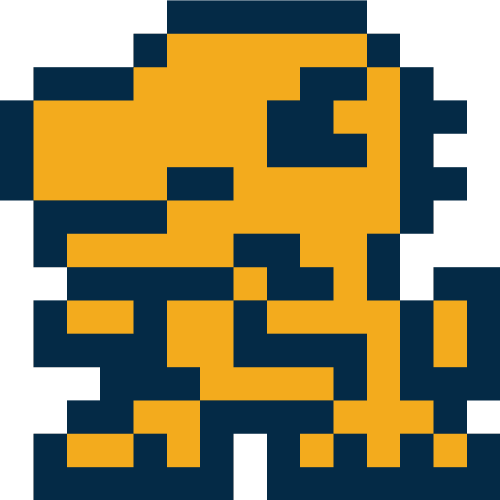
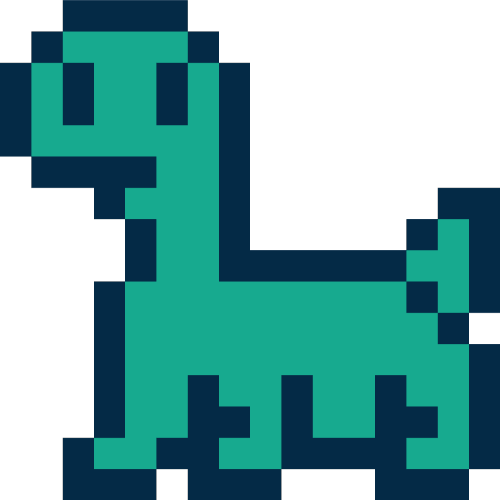
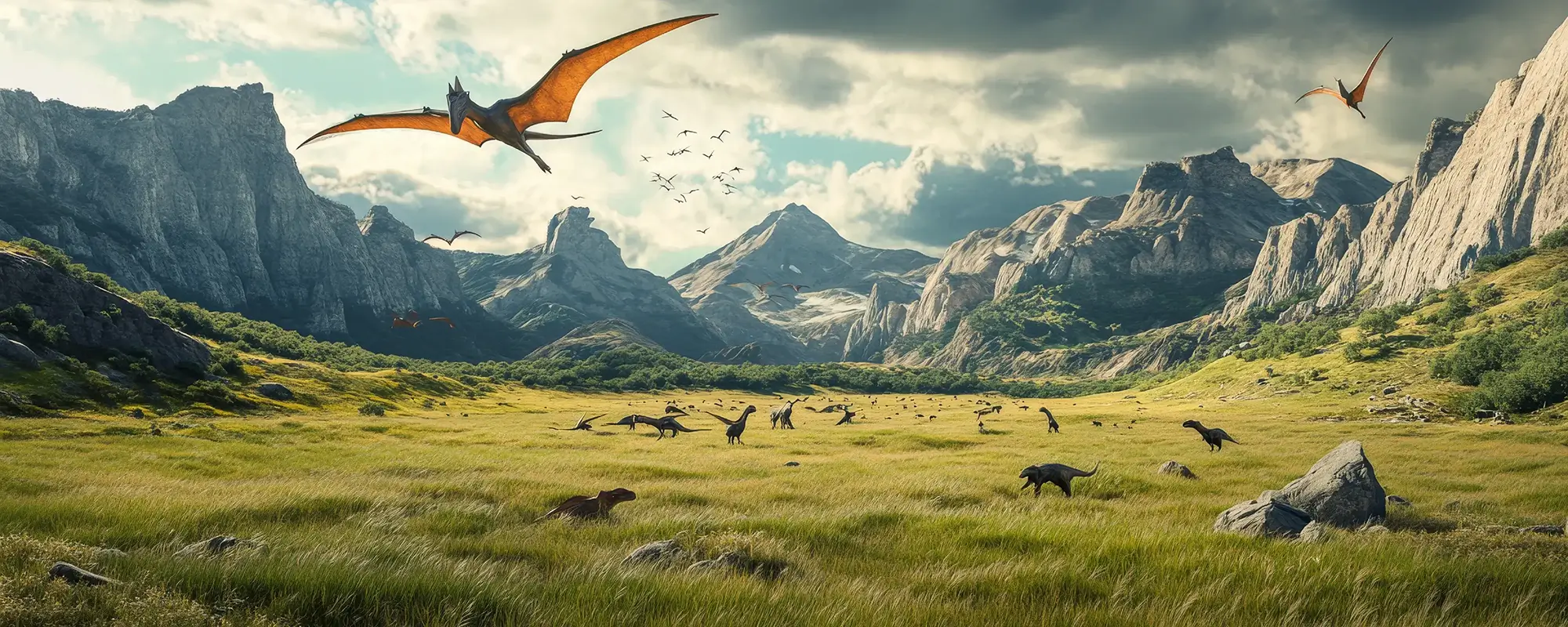
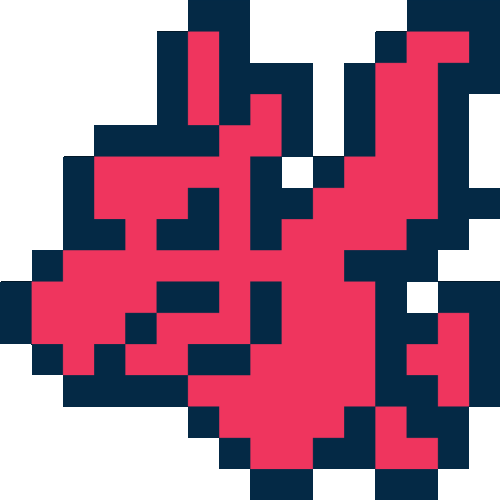

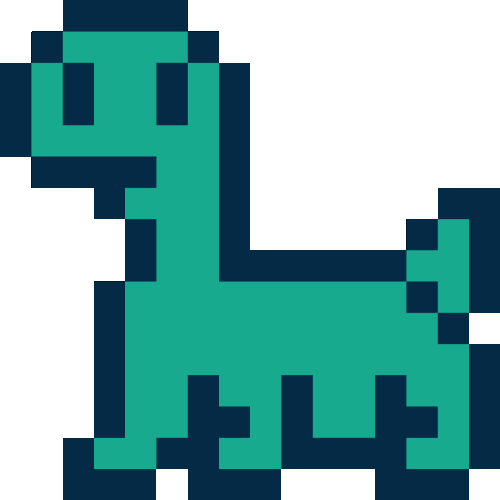
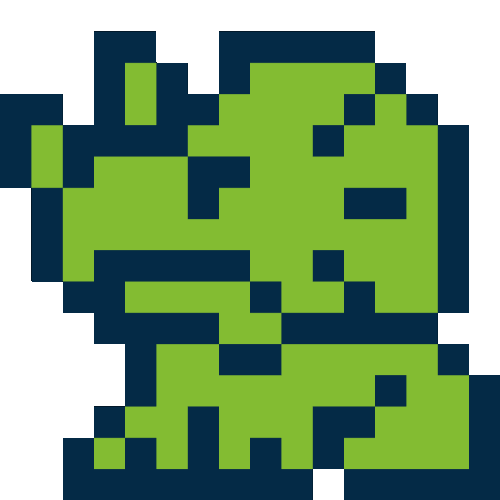
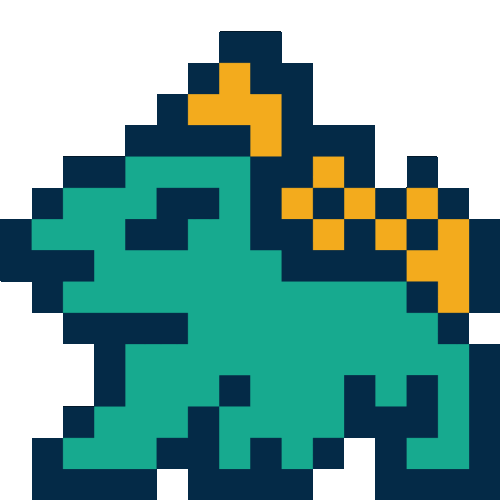

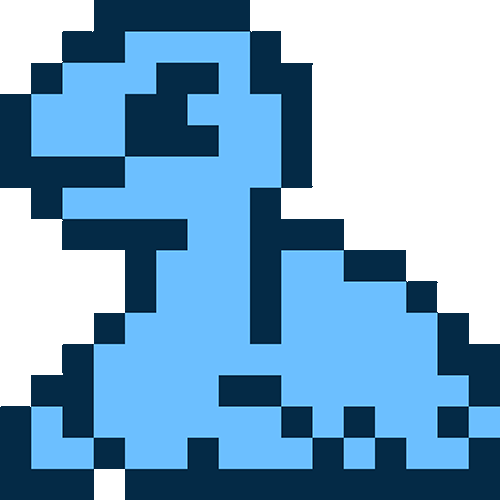
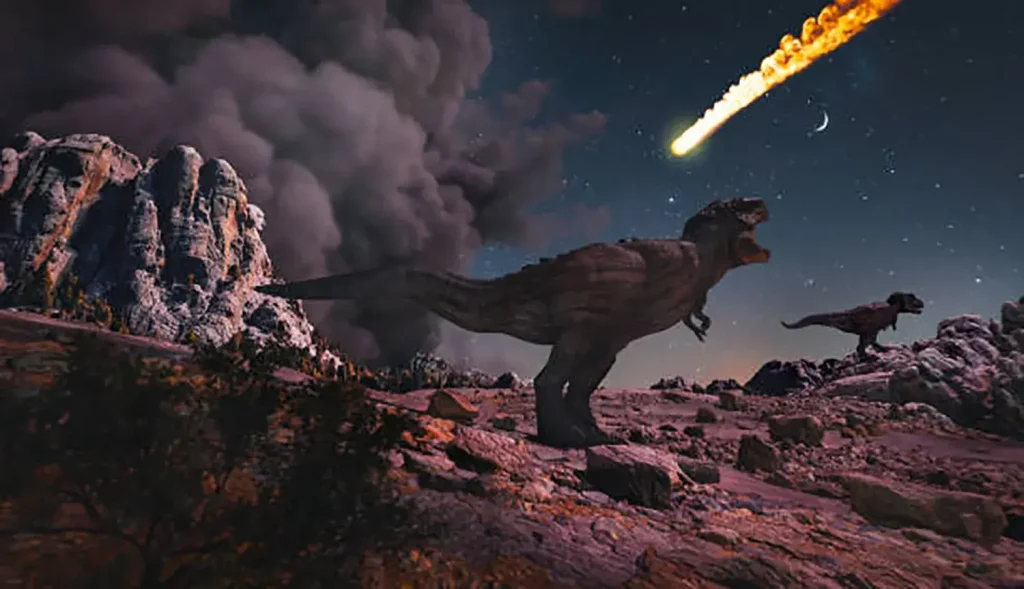
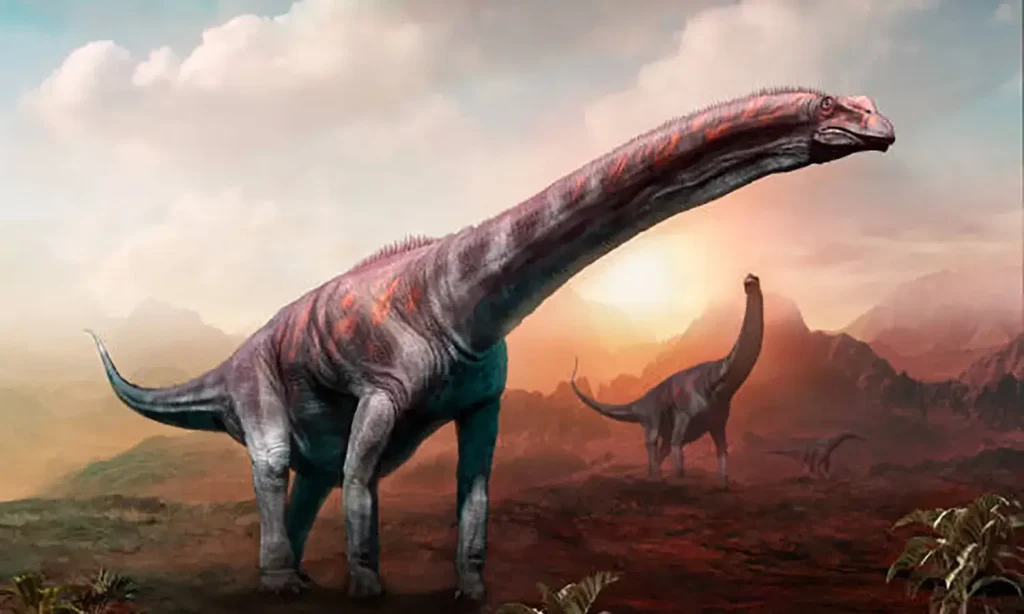
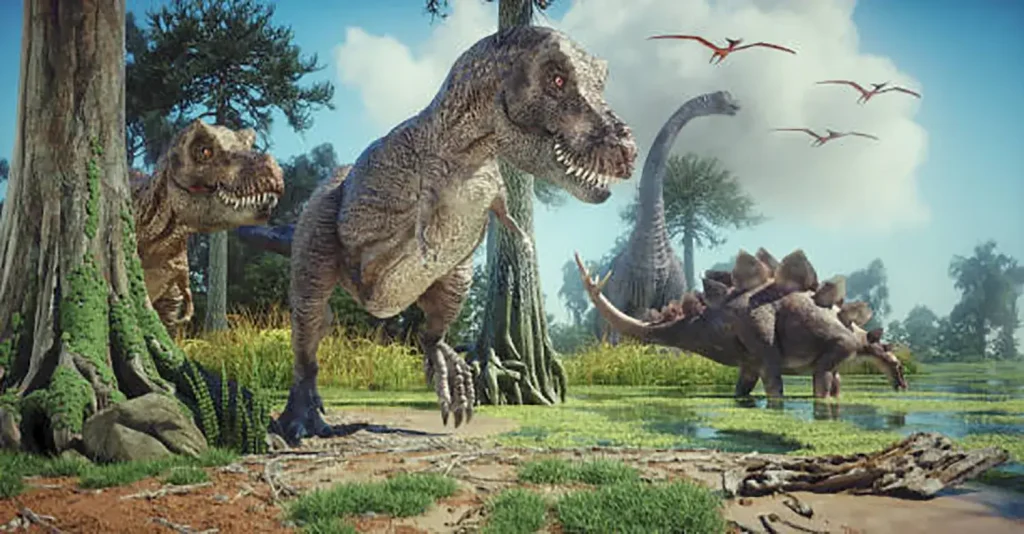
Description
Triceratops is one of the most famous dinosaurs, along with Tyrannosaurus and Stegosaurus.
Its name, meaning “three-horned face” in ancient Greek, reflects its defining features: three large horns and a shield-like frill on its head.
It lived in North America during the Late Cretaceous period and was one of the last surviving ceratopsians until the extinction of the dinosaurs.
According to some research, Triceratops made up over 60% of the dinosaur fossils excavated from the geological layers of that period in North America, suggesting it had a massive population.
As one of the last dinosaurs to survive, it is also highly likely that it was the primary prey of Tyrannosaurus.
It was likely a primary food source for Tyrannosaurus.
The Secret to Its Overwhelming Strength: The Role of Its Horns and Frill
The symbol of Triceratops’s strength is its two horns, which grew to over 1 meter long, and the large frill that covered its head.
The frill was large enough to occupy half the length of its entire skull, and powerful jaw muscles may have been attached to its base.
The frill had a strength unmatched among ceratopsians because it did not develop the holes commonly seen in other species until they reached old age.
For many years, it was believed that these horns and frills were weapons used for self-defense against carnivorous dinosaurs.
In fact, fossils of Triceratops with healed bite marks from a Tyrannosaurus have been found, as well as a Tyrannosaurus fossil with stab wounds, which confirms that they were used in combat.
It fought back by brandishing its long horns.
There are multiple theories about their purpose, including “protective gear for the neck,” “a display to attract mates,” “a way to look bigger and intimidate,” and “territorial fighting,” suggesting that they served more than one purpose.
However, there are various theories about its fighting style.
Some research suggests that charging with its horns, as depicted in movies and on TV, could have broken its neck upon impact.
In response, strong counterarguments have been made, suggesting that the flexibility of its neck muscles and bones was not fully considered. An alternative theory suggests that the primary mode of attack was not a charge, but a close-range thrusting motion.
The horns’ main purpose is also considered by some to be for rituals during mating or for strength contests to determine a herd’s leader.
However, the idea that a creature would not use a biological feature that could serve as a weapon in a fight remains a persistent counter-argument, and the theory that it fought with its horns has not been entirely disproven.
Why It Survived Despite Its Slow Speed
Triceratops had a robust build, measuring about 9 meters in length and weighing between 6,000 and 12,000 kg, and its appearance resembled a rhinoceros.
With a head weighing nearly a ton, it was practically impossible for it to lift its head very high.
Furthermore, its skull had almost no hollow spaces, and its neck bones were fused together into a short, single rod, which meant it couldn’t move its neck freely.
Therefore, it is believed that it could not eat tall plants.
Due to its heavy head, its estimated top speed was around 25 km/h, meaning it couldn’t run as fast as a rhinoceros.
Its speed is thought to have been slower than that of a Tyrannosaurus.
However, if we take the theory that Tyrannosaurus was slow as fact, Triceratops might have been faster, so it might have been able to escape by running after all.
Nevertheless, the reason it was able to survive for millions of years was its overwhelming presence, including its enormous body, sturdy frill, and powerful horns.
Even if it wasn’t a fast runner, it would stand and face an attacking predator with its three horns and use its frill like a shield to protect its neck from biting attacks.
It survived until the end of the Cretaceous Period along with ferocious theropods like Tyrannosaurus.
Diet: The Strongest-Jawed Herbivore in History?
The jaw of Triceratops is considered to be the strongest among all plant-eating animals in history.
A thick beak had developed at the front of its mouth, which it used to pluck food and then finely shred it with its grinder-like back teeth.
Its teeth were naturally sharpened by chewing plants, becoming as sharp as a chisel, and new teeth would emerge as old ones wore down.
Triceratops was able to eat all kinds of plants, and the traces of its feeding were said to have looked as if they were clipped by a giant pair of pruning shears.
Given its body size, which was comparable to an elephant’s, it likely ate any plant it could find in its surroundings.
It ate any plant it could find in its surroundings.
The Mystery of Its Growth and Species Classification
Triceratops’s horns and frill changed shape significantly as it grew.
While newborns had short, straight horns, juveniles’ horns curved back dramatically, and as they matured, their horns pointed forward.
Due to the large individual differences in the shape of its frill and horns, a theory once suggested that 16 species had emerged over 4 million years. However, today, only two species are recognized as valid: Triceratops horridus and Triceratops prorsus.
Since T. horridus, with its shorter nasal horn, is mainly found in older geological layers, and T. prorsus, with its longer nasal horn, is found in newer layers, the theory of anagenesis—that the species changed over time within a single lineage—is considered plausible.
The Mysterious Co-species Theory: Torosaurus
Torosaurus was a ceratopsian discovered two years after Triceratops. Due to their similar time period and characteristics, they were long considered closely related species.
Torosaurus
The biggest difference between the two was the presence of holes in Torosaurus’s frill.
In 2009, paleontologist John Scannella proposed the theory that Torosaurus was simply a mature individual of Triceratops.
In 2010, in a joint paper with the famous paleontologist Jack Horner, he further proposed that the holes in the frill were a change that occurred with maturity to reduce the burden of increased body weight, suggesting they were the same genus.
However, this theory faced many counterarguments.
Fossils of young Torosaurus were discovered, as were fossils of old Triceratops that did not have holes in their frills.
It was also pointed out that the bone structure of the frills and the number of small bones (epoccipitals) along the edge of the frill were clearly different between the two.
Based on this evidence, the scientific consensus today is that while Torosaurus and Triceratops are closely related, they are distinct and separate genera.
A Discovery of a Lifetime: The Miracle of “Dueling Dinosaurs” and Physical Structure
In 2006, a miraculous fossil known as the “Dueling Dinosaurs” was discovered, showing a Tyrannosaurus and a Triceratops that had died intertwined with one another.
A broken Tyrannosaurus tooth was embedded in the Triceratops’s hip, and a bone in the Tyrannosaurus’s finger was broken.
This is unique circumstantial evidence that shows the two fought fiercely and died together.
Even more astonishingly, this Triceratops had extensive fossilized skin impressions.
Its skin was found to be covered in large, hexagonal scales with conical projections at their centers.
This makes it a precious specimen that gives us a detailed look at what Triceratops looked like when it was alive.
It is believed that Triceratops placed most of its weight on its front feet to support its heavy head.
Its front feet had three well-developed toes—the thumb to the middle toe—which supported each other to form a strong structure.
Its hind feet had a smaller contact area with the ground compared to its front feet, indicating they were not as well-suited for bearing weight.
Behind the strength and success of Triceratops lie many mysteries that have yet to be unraveled.
With new discoveries, our understanding of its appearance will likely continue to be updated.